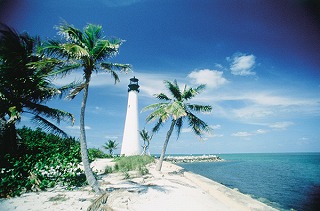Remarks by Consul General Eiichi Kawahara
at Breakfast meeting with Pensacola Bay Area Chamber of Commerce
May 4, 2011
Mr. Jim Hizer, President of Pensacola Bay Area Chamber of Commerce,
Thank you for your kind introduction. I would like to express my appreciation for giving me the opportunity to address the members of the Pensacola Bay Area Chamber of Commerce.
Yesterday at lunch time, I watched the Navy Blue Angels on an acrobatic air show at the Naval Air Station here in Pensacola. I enjoyed the air show along with the Commander of the Naval Air Station and some County Commissioners. The Commander told me he was stationed at Atsugi Air Base in Japan twice. He also mentioned that U.S. is now celebrating the first centenary of aviation history. In the world, there are only 3 countries with 100 year-history in aviation: USA, Britain and Japan.
Another centenary celebration to take place next year, involving the U.S. and Japan, will be the Sakura Festival. As you may be aware, thousands of cherry trees are in full bloom every April around the Potomac River Tidal Basin in Washington, DC. Those trees were donated to the United States by the citizens of Tokyo, 99 years ago, as a symbol of friendship. Here in Pensacola, we also have more than 50 young cherry trees in the gardens of the Japan House at University of West Florida. Therefore, may I propose for us to join in celebration of the first centenary of Sakura festival with the participation and support of the Pensacola community?
Since I assumed my post as Consul General in Miami 100 days ago, common key word here is 100, I have been enjoying the diversity and dynamic pace and activity of the State of Florida. Miami is also a good place to observe the development in Latin America.
Last night, I met and shared with City Mayor Ashton Heyward at a dinner hosted by Hitachi Cables Automobile Parts. I commented to him on my visit yesterday afternoon to the Hitachi Cables facility. Hitachi Cables, herein Pensacola, produces 40% of the North American market demand of brake hoses, and this factory is the world’s largest brake hose production center with more than 300 local workers.
On another note, still referring to the great exchange between Pensacola and Japan, The City of Pensacola has had a sister city relation with Gero City in Gifu, Japan for the last 18 years. I met 20 middle school students from Gero yesterday; they were enjoying exchange programs with Brown Burge Middle School.
Now I would like to make a few remarks on the March 11 disaster in Northern Japan and thereafter. On March 11, Japan was hit by the most powerful earthquake in recorded history. The quake left more than 28,000 people dead or missing.
Since the earthquake, Japan has been strongly supported by its friends. I would like to express my deepest appreciation to the U.S. for the prompt and massive assistance by U.S. forces stationed in Japan, U.S. Navy operating in the Pacific and American civilian relief workers.
Through this period of enormous difficulties, we have come to understand that a friend in need is a friend indeed. After the earthquake and tsunami, U.S. Secretary of State, Mme. Hillary Clinton, visited Japan and expressed the United States’ solidarity with Japan and the support to U.S.- Japan public and private partnerships for rebuilding the affected northern part of Japan. “The Japanese are indomitable and courageous,” Australian Prime Minister Julia Gillard said when she visited an evacuation shelter in the afflicted region.
Japan will not simply rebuild what used to be, but it will aim for an innovative reconstruction that focuses on the future. I am confident that Japan will reshape itself into a more dynamic country, harnessing the support and solidarity offered by the international community. Japan is and will remain open for business and travel. Rather than being misled by sensational media reports, please come to Japan with peace of mind for sightseeing, study, business or any other purposes. If you imagine that the entirety of Japan is covered by debris, that is completely wrong conception. For instance, the major highway that runs through the most affected Tohoku region was reopened only two weeks after the earthquake. The Shinkansen, the bullet train that connects Tokyo and Tohoku region, became fully operational again on April 29 after less than 50 days of disaster. If you are thinking of supporting us in our path towards recovery, the most effective way would be to visit Japan and to buy our excellent products, just as before. I call on all of you to engage actively in the exchange with Japan.
Thank you.
|
